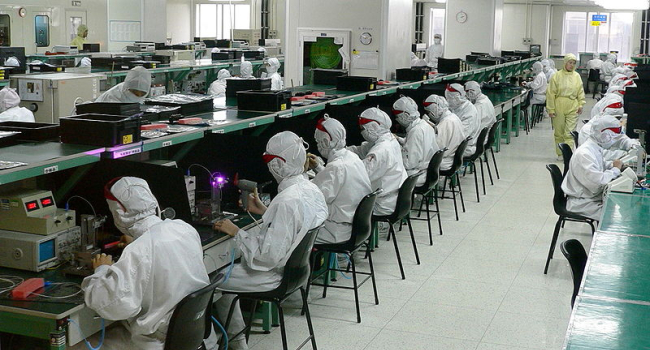
Apple to replace half of iPhone assembly line workers with robots
Apple plans to cut the number of workers involved in the final assembly of the iPhone by 50% through automation of manual labor. This decision was made following relatively recent clashes between workers and the police and is part of Apple's strategy to optimize its supply chain.
What is the reason?
According to the 9to5mac.com, this directive was issued by Sabih Khan, Apple's Senior Vice President of Operations, after violent clashes between iPhone workers and the police in November 2022 near the Foxconn plant, which houses the main assembly lines. During the COVID-19 period, workers, angered by working conditions, a lack of food in the cafeterias, and the inability to leave the closed space, staged a riot.
After the incident, Apple decided to reduce the total number of jobs and implement a project to automate production and optimize the supply chain, which was previously considered impossible due to high costs. However, the company is now willing to incur these expenses, investing in expensive equipment that could cost hundreds of millions of dollars.
The results are noticeable
Apple's efforts in automation have already led to certain results. According to sources, some stages of iPhone assembly, including the installation of metal fastening parts and flexible printed circuit boards on components without human intervention, have been successfully automated over the past year. This process has already allowed Apple and its partners to cut thousands of jobs in China.
In addition to internal developments, Apple is also strengthening its position in supply chain automation by acquiring specialized companies. Last year, Apple acquired Drishti, a company specializing in analyzing conveyor belt video footage to identify bottlenecks and issues in real-time. Another valuable acquisition was DarwinAI, which uses artificial intelligence to optimize industrial processes. Apple is also closely collaborating with manufacturing partners such as Foxconn, Luxshare Precision, and Pegatron.
Obstacles
However, Apple faces obstacles. For example, plans to automate the process of installing certain iPhone components this year were canceled due to a high defect rate. Despite such difficulties, the company remains firmly committed to its long-term goal of significantly reducing the number of workers in final assembly operations by almost 50%. This is expected to happen over the next few years.
- Related News
- What to do if you drop your smartphone into water?
- Insider publishes photos of Galaxy Watch 7, Watch Ultra, Buds 3 and Buds 3 Pro 2 weeks before presentation
- Samsung has overtaken Apple in US smartphone sales
- What problems can arise with phone charging and how to solve them?
- Apple A18 Pro chip used in iPhone 16 will receive fastest NPU on market
- 6100mAh, 100W, IP65, 24GB RAM and Snapdragon 8 Gen 3։ OnePlus Ace 3 Pro’s specs are known
- Most read
month
week
day
- NASA admits it cannot protect the Earth from asteroid collision 1468
- Jelly Max: World's smallest 5G phone 804
- China makes a historic breakthrough: Chang'e-6 probe delivers soil samples from the far side of the Moon 727
- Debris of Chinese rocket fell near the settlement (video) 669
- How and why is artificial intelligence worsening climate on Earth? 660
- Apple to replace half of iPhone assembly line workers with robots 647
- WhatsApp for iOS gets new feature 596
- Why won't older iPhones and Vision Pro get AB support? Apple's clarification 590
- Samsung unveils which smartphones will receive Android 15 580
- Fake QR codes, including on scooters: Scammers use new fraud methods 562
- Archive
